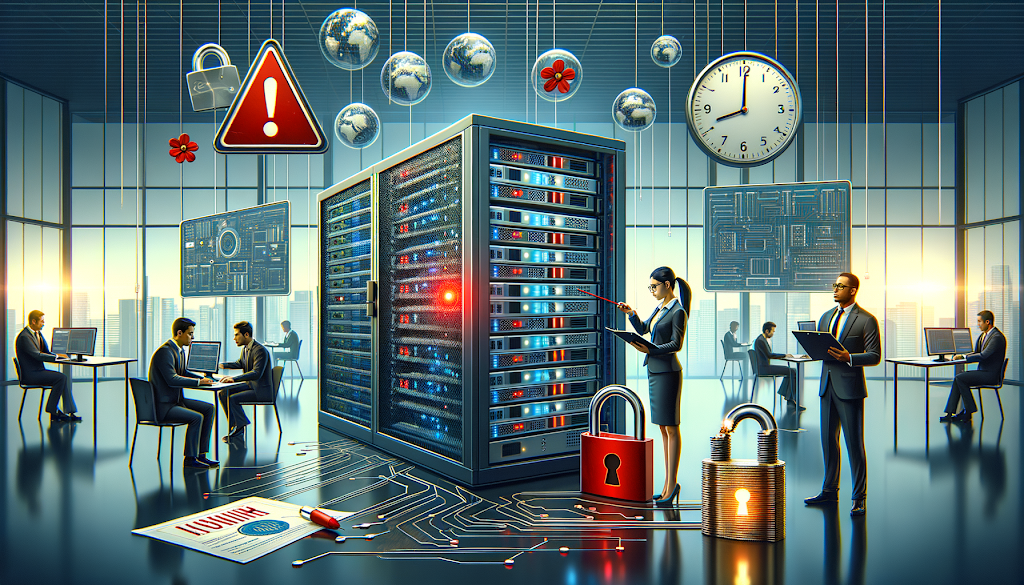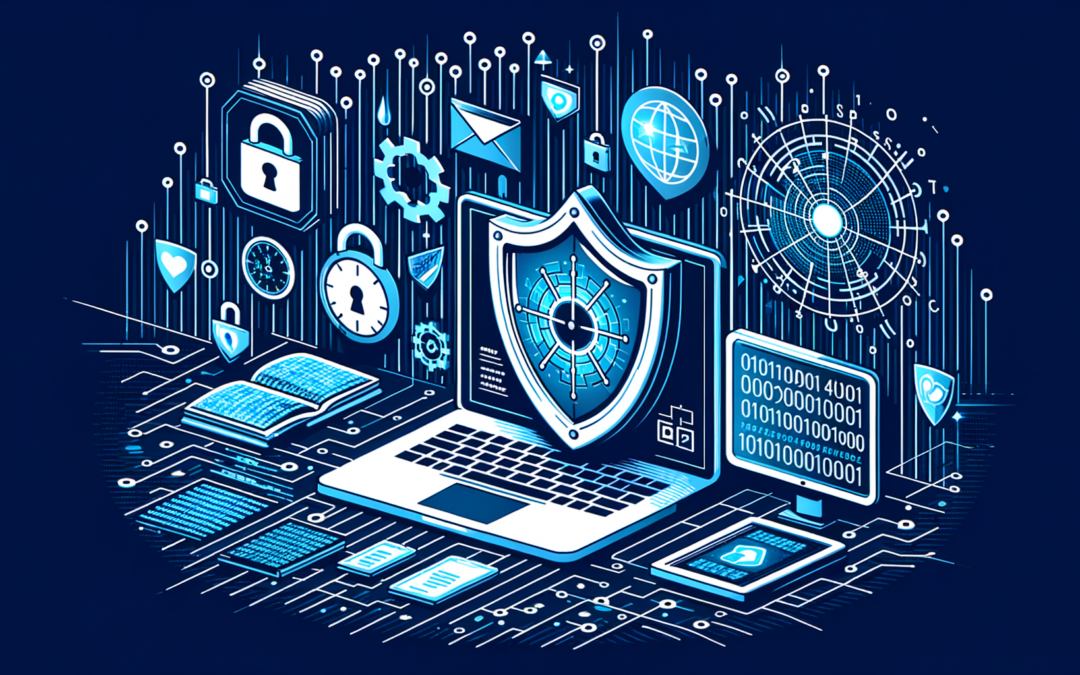Table Of Content
GDPR & CCPA: CIO’s Essential Email Compliance Guide
Introduction to Email Compliance for CIOs
In today’s increasingly digital world, the importance of email compliance cannot be overstated. Organizations globally are under heightened scrutiny to ensure that they adhere to laws such as the General Data Protection Regulation (GDPR) and California Consumer Privacy Act (CCPA). These regulations have set a new benchmark for data protection, influencing how businesses collect, process, and manage personal information. As CIOs navigate these regulatory landscapes, understanding the nuances of compliance is crucial for organizational success.
The core topic of this article centers around the obligations and strategies CIOs must adopt to secure email communications and comply with GDPR and CCPA. We explore the implications of these regulations on email practices and highlight key strategies that can protect organizations from potential infringements. By delving into essential compliance requirements, we offer insights into building robust data protection frameworks that align with GDPR and CCPA mandates. Let’s delve deeper into the intricacies of these regulations and explore how they shape cybersecurity strategies in the modern business environment.
The Importance of GDPR in Data Protection
The GDPR, which came into effect in May 2018, has transformed the way businesses handle personal data across the European Union. This landmark legislation empowers individuals with greater control over their personal information, compelling organizations to adopt more stringent data protection measures. GDPR compliance requires businesses to adhere to principles such as data minimization, transparency, and accountability, thus ensuring that personal data is processed lawfully and fairly.
For CIOs, understanding GDPR’s implications on email communications is paramount. They must ensure that emails and any associated personal data are secure from unauthorized access, breaches, and misuse. This involves implementing strong encryption methods, regular security audits, and developing policies that align with data protection principles. Moreover, GDPR’s extraterritorial scope means that even non-EU companies collecting data from EU citizens must comply, making it necessary for global businesses to evaluate their email practices accordingly.
Overall, GDPR serves as a blueprint for robust data protection, setting a high standard for privacy and security. It emphasizes the importance of protecting personal information and calls for a comprehensive approach to data governance. As CIOs adopt these principles, they contribute to creating a secure digital ecosystem that fosters trust and resilience in the face of evolving cyber threats.
Understanding CCPA and Its Impact on Email Practices
The California Consumer Privacy Act (CCPA) came into effect on January 1, 2020, marking a significant shift in the privacy landscape in the United States. Much like the GDPR, the CCPA grants consumers greater control over their personal data. It requires businesses to inform consumers about the categories of personal data collected, the purposes for which it is used, and the third parties with whom it is shared.
For CIOs, the CCPA introduces specific challenges and opportunities regarding email compliance. They must ensure that their organizations’ email systems can accommodate consumer requests for data access, deletion, or opting out of data sharing. This involves not only technological adjustments but also updating privacy policies and training staff on CCPA requirements. The CCPA also emphasizes the need to secure email communications against data breaches, with potential penalties for non-compliance.
Importantly, the CCPA has laid the groundwork for other states in the U.S. to consider similar privacy regulations. Consequently, CIOs must adopt proactive measures that extend beyond California, anticipating future regulatory developments and bolstering their email practices in line with evolving legal standards. By embracing CCPA’s principles, organizations lay a foundation for privacy-centric operations, fostering a culture of transparency and accountability.
Email Security: Strategies for GDPR and CCPA Compliance
Ensuring email security under GDPR and CCPA requires a multifaceted approach. Organizations must first conduct comprehensive data mapping to identify email systems that process personal data and assess associated risks. Following this, implementing robust encryption solutions is critical for securing communications both at rest and in transit.
Furthermore, adopting advanced authentication mechanisms such as multi-factor authentication (MFA) helps mitigate unauthorized access to email accounts. Regular phishing simulations and training sessions can equip employees with the necessary skills to recognize and thwart malicious email-based attacks. By integrating these strategies into existing cybersecurity frameworks, CIOs can enhance their organization’s readiness to meet GDPR and CCPA requirements.
For compliance with both regulations, it’s essential to maintain detailed records of data processing activities, including email correspondences. Incident response plans must be in place to address potential data breaches swiftly, minimizing impact and regulatory scrutiny. By implementing these measures, CIOs instill a proactive approach to email security, aligning with regulatory expectations and safeguarding sensitive information effectively.
Developing a Robust Data Protection Framework
Establishing a strong data protection framework goes beyond technical solutions; it involves a holistic organizational shift toward privacy-centric operations. CIOs must prioritize embedding privacy-by-design principles into all processes and systems, ensuring that data protection is an integral part of their organization’s operations.
This involves regular training sessions to enhance employee awareness of GDPR and CCPA requirements and fostering a culture of security and accountability. Cross-functional collaboration between IT, legal, and compliance departments is crucial for addressing the multifaceted challenges of data protection. Additionally, appointing a dedicated Data Protection Officer (DPO) can guide compliance efforts, keeping abreast of regulatory changes and ensuring that the organization adapts to evolving requirements.
Ultimately, developing a comprehensive data protection framework positions organizations to navigate the complex landscape of GDPR and CCPA compliance successfully. By embedding privacy principles into their core operations, organizations not only fulfill their regulatory obligations but also build trust with consumers, enhancing their reputation and resilience in the face of cybersecurity threats.
Conclusion: Navigating Email Compliance in a Regulatory World
As organizations continue to embrace digital transformation, ensuring compliance with GDPR and CCPA becomes a strategic imperative for CIOs. Navigating these regulatory landscapes requires a comprehensive understanding of email security practices, coupled with a proactive approach to data protection. By employing sound strategies and fostering a culture of privacy, organizations can meet compliance obligations while securing consumer trust and maintaining a competitive edge.
As you prepare to strengthen your email compliance practices, consider reaching out to Jun Cyber. Our expertise in cybersecurity can help you navigate the complexities of GDPR and CCPA compliance, ensuring that your organization is well-prepared to meet regulatory requirements.
For further insights into enhanced cybersecurity regulations and best practices, consider exploring the following reputable sources:
- NIST Cybersecurity Framework: A comprehensive framework offering guidance on managing and reducing cybersecurity risk.
- International Association of Privacy Professionals (IAPP): A resource for understanding GDPR and managing privacy practices effectively.
- Center for Internet Security (CIS) Controls: A set of critical security controls for effective cyber defense.
Reach out to us today to discuss how we can enhance your email compliance strategy. Visit our website at www.juncyber.com or schedule a free consultation: Schedule a Call with Us.
Reference: GDPR & CCPA: A CIO’s Essential Guide to Email Compliance



